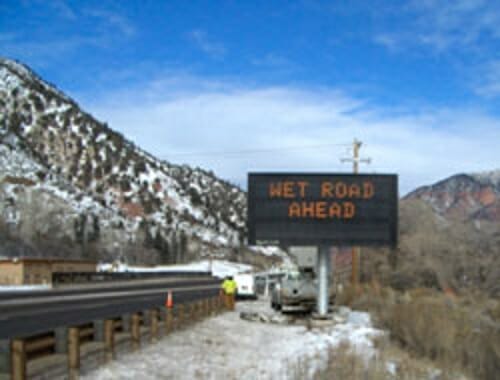E – 1537 FHWA Best Practices for Road Weather Management
$175.00
Courses Included
Nationwide, on average, each year over 7,000 fatalities occur in weather-related crashes. In addition, the cost of repairing roads damaged by harsh winter weather consumes a significant portion of transportation budgets. This course presents best management practices for attempting to decrease the number of crashes caused by bad weather and for reducing associated maintenance costs. Twenty-seven case studies of systems in 22 states that improve roadway operations under inclement weather conditions are described. Each case study has six sections including a general description of the system, system components, operational procedures, resulting transportation outcomes, implementation issues, as well as contact information and references.
This course is based on the document, “Best Practices for Road Weather Management,” Version 3.0, of the Federal Highway Administration, Technical Report No. FHWA-HOP-12-046, June 2012.
Description
Nationwide, on average, each year over 7,000 fatalities occur in weather-related crashes. In addition, the cost of repairing roads damaged by harsh winter weather consumes a significant portion of transportation budgets. This course presents best management practices for attempting to decrease the number of crashes caused by bad weather and for reducing associated maintenance costs. Twenty-seven case studies of systems in 22 states that improve roadway operations under inclement weather conditions are described. Each case study has six sections including a general description of the system, system components, operational procedures, resulting transportation outcomes, implementation issues, as well as contact information and references.
This course is based on the document, “Best Practices for Road Weather Management,” Version 3.0, of the Federal Highway Administration, Technical Report No. FHWA-HOP-12-046, June 2012.
- Methods for informing drivers about predicted adverse weather
- Use of various devices to detect poor visibility and road conditions automatically, without the need for transportation personnel to be present
- Strategies for minimizing road damage caused by winter storms
- Effectiveness of various warning systems and road-maintenance techniques as measured by improved safety or reduced costs
- Implementation problems that may arise with some of the warning systems and road-maintenance techniques
- Protocols and devices for communicating to transportation managers that potentially dangerous weather conditions exist at some locations in the road network
- Descriptions of specific system components, including hardware, software, and personnel
- Strategies for discouraging or, in severe cases, completely restricting drivers’ access to highways, as storm intensity increases






